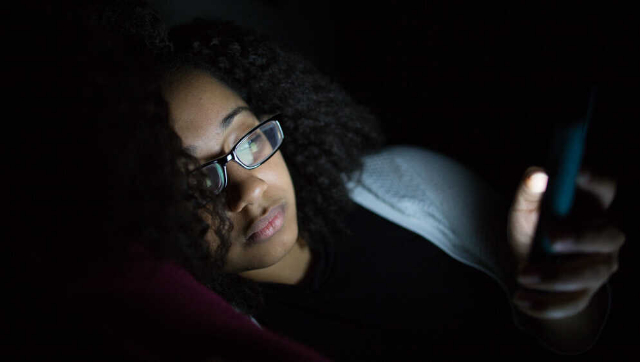As much as we love our smartphones, if we are not careful with our usage habits, these devices can prove to be very dangerous for us. The device has a significant influence on our lives, and it must be handled with caution, or you run the risk of endangering your health. A woman in India’s Hyderabad had to learn this lesson the hard way. Because of improper and excessive usage of her smartphone, Manju, a 30-year-old woman from Hyderabad, had trouble with her vision for over 18 months, until she thought she had gone completely blind. The reason? Doctors diagnosed her with Digital Vision Syndrome or Computer Vision Syndrome
What is Digital Vision Syndrome? To put it simply, computer vision syndrome or digital vision syndrome, as it is also known, is a group of various eye and vision-related problems that comes from prolonged and improper use of mobile devices. Symptoms include dry eyes, blurred vision, eye strain, headache, and also neck and shoulder pain. Normally, these ailments act as a warning sign that there’s something wrong with our usage habits, and that we need to make some changes in how we use our devices - blurred vision, headaches, dry eyes - all of these are ways for our body to let us know that there’s something wrong.
Ignoring these symptoms can spell big trouble, and that is exactly what Manju did. What happened in this case? A recent Twitter thread published by Dr Sudhir Kumar of Hyderabad tells us about Manju’s case. Manju had the habit of using her phone a lot at night for a long time and started having some trouble seeing, for almost one and a half years. According to Dr Kumar, the symptoms included seeing floaters, strong light flashes, dark diagonal patterns, and occasionally having trouble focusing on or seeing certain items. And yet, she continued to use her phone as she was accustomed to. During these one-and-a-half years, there were several instances when she would go intermittently blind when it would turn dark, and was unable to see for a few seconds at a time. The resolution Fearing that she was about to go completely blind, she visited an ophthalmologist and got herself tested. The ophthalmologist, surprisingly, found her eyes to be normal. For a more detailed observation and further tests, she was referred to Dr Kumar, a neurologist. Instead of ordering more tests or prescribing medicines to Manju, Dr Kumar decided to just counsel her and get her to reduce her smartphone usage. Manju, fearing for her sight and fearing that she might damage her optic nerve permanently, stop looking at her smartphone screen, unless absolutely necessary.
Within a month, Majnu’s eyesight turned normal, reported Dr Kumar her momentary loss of vision during the dark also stopped.
In the thread, Dr Kumar also gave us some basic tips and tricks to keep our eyes in check, and surprisingly, they are pretty simple. Basically, avoid looking at digital devices and their screens for long, as it can cause severe and disabling vision-related problems. Also, follow the 20-20-20 rule. Take a 20-second break, every 20 min, to look at something 20 feet away, while working on your computers.
)